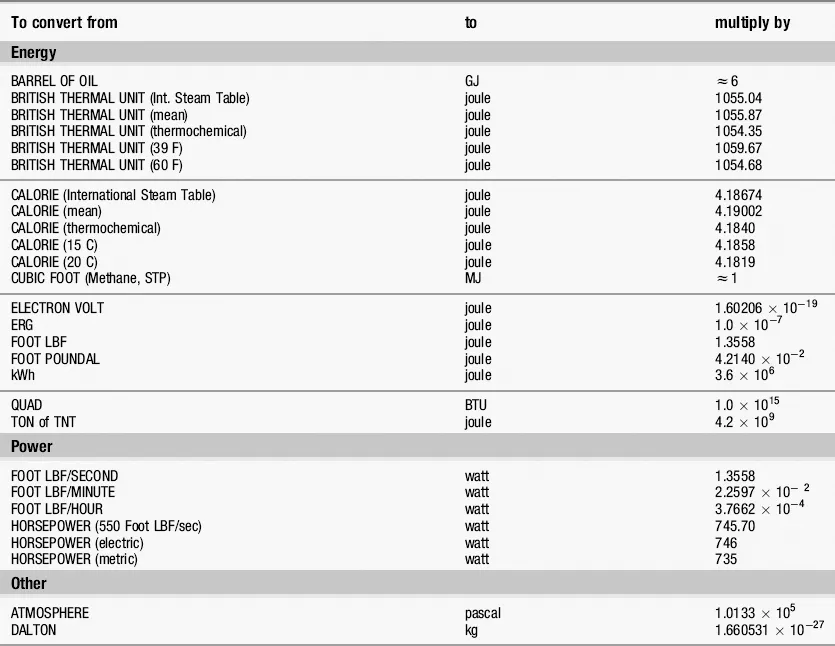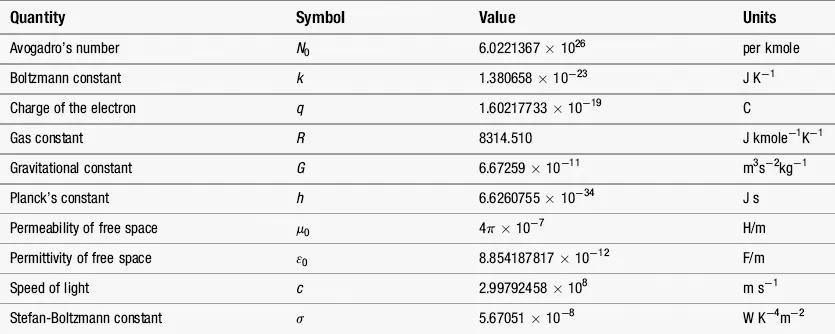
eBook - ePub
Renewable Energy Focus e-Mega Handbook
This is a test
- 528 pages
- English
- ePUB (mobile friendly)
- Available on iOS & Android
eBook - ePub
Book details
Book preview
Table of contents
Citations
About This Book
A one-stop Desk Reference, for engineers involved in renewable energies; this is a book that will not gather dust on the shelf. It brings together the essential professional reference content from leading international contributors in the field. Material ranges from basic to advanced topics* A fully searchable Mega Reference Ebook, providing all the essential material needed by Energy and Environmental Engineers on a day-to-day basis. * Fundamentals, key techniques, engineering best practice and rules-of-thumb together in one quick-reference.* Over 2, 500 pages of reference material, including over 1, 500 pages not included in the print edition
Frequently asked questions
At the moment all of our mobile-responsive ePub books are available to download via the app. Most of our PDFs are also available to download and we're working on making the final remaining ones downloadable now. Learn more here.
Both plans give you full access to the library and all of Perlego’s features. The only differences are the price and subscription period: With the annual plan you’ll save around 30% compared to 12 months on the monthly plan.
We are an online textbook subscription service, where you can get access to an entire online library for less than the price of a single book per month. With over 1 million books across 1000+ topics, we’ve got you covered! Learn more here.
Look out for the read-aloud symbol on your next book to see if you can listen to it. The read-aloud tool reads text aloud for you, highlighting the text as it is being read. You can pause it, speed it up and slow it down. Learn more here.
Yes, you can access Renewable Energy Focus e-Mega Handbook by Bent Sorensen,Mukesh Doble,Michel Broussely,Preben Maegaard,Frano Barbir,Gianfranco Pistoia,Soteris Kalogirou,Truman Storvick,Paul Breeze,Galen J. Suppes,Nasir El Bassam,Dr. Semida Silveira,Shang-Tian Yang,Aldo Vieira da Rosa,Harsh K. Gupta,Sukanta Roy in PDF and/or ePUB format, as well as other popular books in Physical Sciences & Energy. We have over one million books available in our catalogue for you to explore.
Information
Topic
Physical SciencesSubtopic
EnergySection 1
INTRODUCTION
Chapter 1.0
Introduction
1.0.1 Units and constants
Although many different units are employed in energy work, we shall adopt, whenever possible, the “Systéme International,” SI. This means joules and watts. If we are talking about large energies, we'll speak of MJ, GJ, TJ, and EJ—that is, 106, 109, 1012, and 1018 joules, respectively.
We cannot entirely resist tradition. Most of the time we will express pressures in pascals, but we will occasionally use atmospheres because most of the existing data are based on the latter. Sometimes electron-volts are more convenient than joules. Also, expressing energy in barrels of oil or kWh may convey better the idea of cost. On the whole, however, we shall avoid “quads,” “BTUs,” “calories,” and other non-SI units. The reason for this choice is threefold: SI units are easier to use, they have been adopted by most countries, and are frequently better defined.
Consider, for instance, the “calorie,” a unit preferred by chemists. Does one mean the “international steam table calorie” (4.18674 J)? Or the “mean calorie” (4.19002 J)? Or the “thermochemical calorie” (4.18400 J)? Or the calorie measured at 15 C (4.18580 J)? Or at 20 C (4.18190 J)?
Americans like to use the BTU, but, again, there are numerous BTUs: “steam table,” “mean,” “thermochemical,” at 39 F, at 60 F. The ratio of the BTU to the calorie of the same species is about 251.956 with some variations in the sixth significant figure. Remember that 1 BTU is roughly equal to 1 kJ, while 1 quad equals roughly 1 EJ. The conversion factors between the different energy and power units are listed in Table 1.0-2. Some of the fundamental constants used in this book are listed below.
Table 1.0-2
Conversion coefficients

LBF stands for pounds (force).
1.0.2 Energy and utility
In northern California, in a region where forests are abundant, one cord of wood sold in 1990 for about $110. Although one cord is a stack of 4 by 4 by 8 ft (128 cubic feet), the actual volume of wood is only 90 cubic feet—the rest is empty space between the logs. Thus, one cord contains 2.5 m3 of wood or about 2200 kg. The heat of combustion of wood varies between 14 and 19 MJ/kg. If one assumes a mean of 16 MJ per kilogram of wood burned, one cord delivers 35 GJ. Therefore, the cost of energy from wood was $3.2/GJ in northern California.
In 1990, the price of gasoline was still approximately $1.20 per gallon, the equivalent of $0.49 per kg. Since the heat of combustion of gasoline is 49 MJ/kg, gasoline energy costs $10/GJ, or three times the cost from burning wood.
Notwithstanding electricity being inexpensive in California, the domestic consumer paid $0.04 per kWh or $11.1/GJ.
From the above, it is clear that when we buy energy, we are willing to pay a premium for energy that is, in a more convenient form—that is, for energy that has a higher utility.
Utility is, of course, relative. To stoke a fireplace in a living room, wood has higher utility than gasoline and, to drive a car, gasoline has higher utility than electricity, at least for the time being. For small vehicles, liquid fuels have higher utility than gaseous ones. For fixed installations, the opposite is true.
The relative cost of energy is not determined by utility alone. One barrel contains 159 liters or 127 kg of oil. With a heat of combustion of 47 MJ/kg, this corresponds to 6 GJ of energy. In mid-1990, the price was $12/barrel or $2/GJ, somewhat less than the price of wood at that time notwithstanding oil being, in general, more useful. However, oil prices are highly unstable depending on the political circumstances of the world.
Table 1.0-1
Fundamental constants

Government regulations tend to depress prices below their free market value. During the Carter era, natural gas was sold in interstate commerce at the regulated price of $1.75 per 1000 cubic feet. This amount of gas corresponds to 1 GJ of energy. Thus, natural gas was cheaper than oil or wood.
1.0.3 Conservation of energy
Energy can be utilized but not consumed.† It is a law of nature that energy is conserved. Instead of consuming it, we degrade or randomize energy, just as we randomize mineral resources when we process concentrated ores into metal and then discard the final product as we do, for example, with used aluminum cans. All energy we use is degraded into heat and eventually radiated out into space.
The consumable is not energy; the consumable is the fact that energy has not yet been randomized. The degree of randomization of energy is measured by the entropy of the energy. This is discussed in some detail in Chapter 2.1.
1.0.4 Planetary energy balance
The relative stability of Earth's temperature suggests a near balance between planetary input and output of energy. The input is almost entirely that of the solar radiation incident on Earth. This amounts to 173,000 TW (173,000 × 1012 W).
Besides solar energy, there is a contribution from tides (3 TW) and from heat sources inside the planet, mostly radioactivity (32 TW).
Some 52,000 TW (30% of the incoming radiation) is reflected back to the interplanetary space: it is the albedo of Earth. All the remaining energy is degraded to heat and re-emitted as long-wave infrared radiation. Figure 1.0-1 shows the different processes that take...
Table of contents
- Cover image
- Title page
- Table of Contents
- Note from the Publisher
- Copyright
- Author Biographies
- Section 1: INTRODUCTION
- Section 2: ENERGY PERSPECTIVES
- Section 3: ALTERNATE ENERGY SOURCES
- Section 4: ENERGY CONVERSION
- Section 5: FUEL CELLS
- Section 6: SOLAR POWER
- Section 7: OCEAN, WAVE AND TIDAL POWER
- Section 8: GEOTHERMAL POWER
- Section 9: WIND POWER
- Section 10: HYDROPOWER
- Section 11: POWER FROM WASTE
- Section 12: BIOENERGY
- Section 13: STORAGE TECHNOLOGIES
- Index